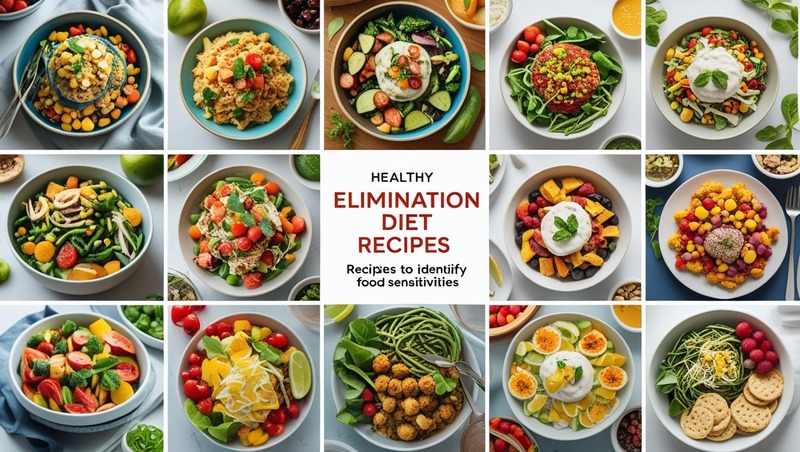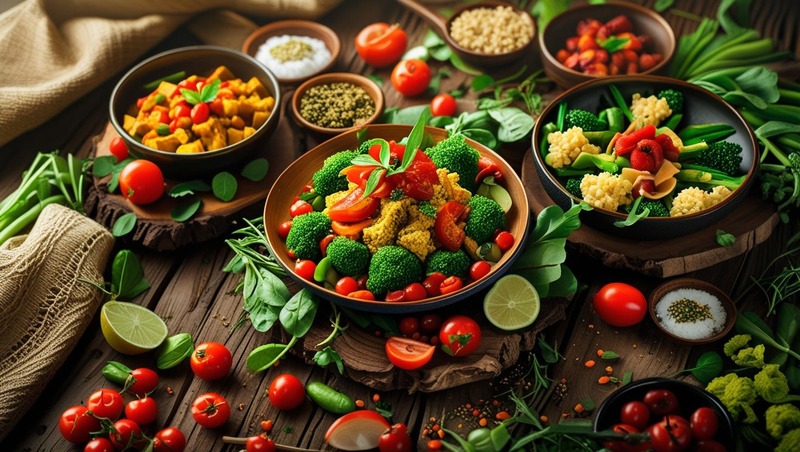Health
Hormonal and Physical Changes During Pregnancy: A Journey of Transformation

Pregnancy is one of the most extraordinary transformations that the human body can undergo. It’s a time of immense physical, hormonal, and emotional change—a process that prepares the body to nurture a new life. For many expectant mothers, these nine months are a blend of excitement, curiosity, and challenges. But what happens to the body during this miraculous phase? This blog takes you through the hormonal and physical changes during the three trimesters of pregnancy, offering insights into what you might experience and how to adapt to this dynamic chapter of life.
The First Trimester: Understanding Hormonal Shifts and Physical Changes
The first trimester, spanning weeks 1 through 12, marks the beginning of the pregnancy journey. This stage is characterized by dramatic hormonal shifts and subtle, yet significant, physical changes that signal the body is preparing for the months ahead.
Overview of Early Pregnancy Symptoms
Even before the baby bump makes its appearance, your body begins to send clear signals of pregnancy. Some common symptoms during this stage include:
- Morning Sickness: Nausea and vomiting, often triggered by hormonal changes, may arrive as early as week six. Though described as “morning sickness,” it can occur at any time of the day.
- Fatigue: The surge in progesterone levels can leave you feeling unusually tired.
- Breast Tenderness: Increased blood flow and hormonal activity may cause sensitivity in the breasts.
- Frequent Urination: The uterus begins to expand and press against the bladder, prompting frequent trips to the bathroom.
Hormonal Changes and Their Effects on the Body
The first trimester is all about hormones working overtime to support a growing life. Key hormonal changes include:
- hCG (Human Chorionic Gonadotropin): Often referred to as the “pregnancy hormone,” hCG ensures the continued production of progesterone and estrogen. This hormone is also responsible for triggering nausea.
- Progesterone: Essential for maintaining a healthy uterine environment, progesterone also relaxes muscles, which can unfortunately result in constipation or bloating.
- Estrogen: Supports the development of the fetus while enhancing blood flow to the uterus. It can also lead to heightened emotions and sensitivities.
The Second Trimester: Embracing the Physical Transformation
By the second trimester (weeks 13 to 26), many mothers-to-be enter what is often referred to as the “golden period” of pregnancy. Hormonal shifts continue to stabilize, and for many, early symptoms like nausea and fatigue begin to fade.
Highlighting the Baby Bump and Changes in Body Shape
The second trimester is when the baby bump usually becomes more prominent. The uterus expands to accommodate the growing baby, and with this comes an array of noticeable physical changes:
- Weight Gain: Healthy weight gain becomes evident in this phase as the baby grows.
- Skin Changes: The “pregnancy glow” is real for some, thanks to increased blood circulation and hormonal contributions. However, some may also experience stretch marks or pigmentation changes, like the “linea nigra” that forms along the abdomen.
- Emergence of Varicose Veins: Some women may notice varicose veins forming in the legs due to the extra blood flow and pressure on the veins. Staying active and elevating the legs periodically can help manage this condition. In severe cases, consulting medical professionals, such as those in Tulsa, for varicose veins treatment may also be necessary.
Addressing Common Health Concerns During This Stage
With physical transformation comes some potential challenges, but these are manageable with the right care:
- Back Pain: The increased weight of the baby and the shift in your center of gravity can strain your back. Prenatal yoga or gentle stretching can provide relief.
- Swelling (Edema): Many women experience swelling in their feet and ankles. Staying hydrated and avoiding prolonged standing can alleviate discomfort.
- Heartburn: Relaxing the esophagus muscles, thanks to hormones, often leads to heartburn. Small, frequent meals can help manage this issue.
The Third Trimester: Preparing for Birth and the Final Stretch
The final trimester (weeks 27 through delivery) is the home stretch. The excitement builds as the due date approaches, alongside new physical demands and preparations for childbirth.
Fetal Development and Physical Demands
By this stage, the baby undergoes rapid growth in preparation for life outside the womb. You might notice the following changes in your body:
- Braxton Hicks Contractions: These “practice” contractions may occur as the body prepares for labor. While they aren’t painful, they can be surprising.
- Shortness of Breath: Due to the upward pressure on the diaphragm, you may notice some difficulty in breathing deeply.
- Weight Increase: Expect weight gain to peak during this trimester, and with it, potential discomfort due to increased physical demand on your body.
Mental and Physical Preparation for Childbirth
The final weeks are a time to prepare mentally and physically for labor and delivery. Preparing for childbirth classes and creating a birth plan can bring a sense of readiness and calm. Tools like breathing exercises and prenatal massages can ease both the mind and body.
Some mothers may also experience heightened emotional shifts during this phase. Hormones such as oxytocin play a part in bonding with your baby while simultaneously influencing your mood. Surround yourself with support, and discuss any concerns with your healthcare provider.
The Journey of Pregnancy and Its Lasting Effects
Pregnancy is far more than just a nine-month transformation—it’s a profound experience that impacts a woman’s body, mind, and emotions for a lifetime.
Tips for Postpartum Care and Recovery
The postpartum phase introduces its own set of changes. To aid recovery and support your well-being as a new mother:
- Prioritize Rest: Sleep when the baby sleeps and don’t shy away from asking for help.
- Focus on Nutrition: A diet rich in proteins, calcium, and iron will support recovery and improve lactation.
- Seek Support: Join a community of mothers or consult postpartum specialists to ease into this new role.
A Word of Encouragement
Every mother experiences pregnancy and postpartum differently. Trust your body, be kind to yourself, and celebrate the incredible strength and resilience you’ve shown throughout this amazing transformation. Remember, pregnancy is not just about creating new life—it’s also about nourishing your own body and spirit.
Conclusion
With a deeper understanding of the incredible transformation that takes place during pregnancy, you can approach this journey with greater confidence and clarity. From hormonal shifts to physical changes, every stage is a natural and essential part of this remarkable process. By prioritizing self-care and leaning on support when needed, you can navigate each phase with resilience and grace. Pregnancy marks the beginning of an extraordinary path to motherhood—one filled with challenges, growth, and unparalleled rewards.
Health
Elimination Diet Recipes: Meals to Identify Food Sensitivities

Have you ever felt bloated, fatigued, or just “off” after eating—but couldn’t pinpoint why? You’re not alone. Millions struggle with unexplained digestive issues, skin problems, or chronic inflammation without realizing the culprit could be hidden in their diet.
An elimination diet is a proven method to identify food sensitivities by temporarily removing common triggers and systematically reintroducing them. But let’s be honest—many elimination diets feel restrictive and bland. That’s where smart, flavorful recipes come in!
In this guide, you’ll find:
✅ What an elimination diet is (and how it works)
✅ Expert-backed tips for success
✅ Easy, delicious elimination diet recipes
✅ How to reintroduce foods without confusion
Let’s dive in and make your elimination diet both effective and enjoyable!
What Is an Elimination Diet?
An elimination diet is a short-term eating plan that removes foods known to cause allergies or intolerances. After a few weeks, you gradually reintroduce them to identify triggers.
Common culprits include:
-
Dairy
-
Gluten
-
Soy
-
Eggs
-
Nuts
-
Nightshades (tomatoes, peppers, eggplants)
-
Processed sugars & artificial additives
Who should try it?
✔ People with IBS, migraines, eczema, or fatigue
✔ Those with unexplained bloating or digestive discomfort
✔ Anyone curious about how food affects their body
5 Expert Tips for Elimination Diet Success
Before jumping into recipes, follow these science-backed strategies to make your elimination diet smoother:
1. Plan Ahead
Stock your kitchen with approved foods to avoid temptation. Meal prep reduces stress and keeps you on track.
2. Keep a Food Journal
Track meals, symptoms, and mood changes. Apps like MySymptoms can help spot patterns.
3. Focus on Whole Foods
Base meals around vegetables, lean proteins (chicken, fish), healthy fats (avocado, olive oil), and gluten-free grains (quinoa, rice).
4. Stay Hydrated
Water aids digestion and helps flush out toxins. Herbal teas (ginger, peppermint) can soothe stomach issues.
5. Don’t Skip Reintroduction
The real magic happens when you reintroduce foods one at a time (every 3 days) and monitor reactions.
7 Delicious Elimination Diet Recipes (Allergen-Free & Flavorful!)
No more boring meals! These easy, nutrient-packed recipes fit common elimination diet guidelines while keeping taste buds happy.
1. Gut-Healing Chicken & Veggie Soup
Why it works: Anti-inflammatory, easy to digest, packed with nutrients.
Ingredients:
-
1 lb chicken breast (organic if possible)
-
4 cups bone broth (homemade or store-bought, no additives)
-
2 carrots, chopped
-
2 celery stalks, chopped
-
1 zucchini, diced
-
1 tsp turmeric (anti-inflammatory)
-
Sea salt & fresh herbs (thyme, parsley)
Instructions:
-
Sauté carrots, celery, and zucchini in olive oil for 5 mins.
-
Add chicken, broth, and spices. Simmer for 25 mins.
-
Shred chicken before serving.
2. Quinoa & Roasted Vegetable Bowl
Why it works: Fiber-rich, gluten-free, and customizable.
Ingredients:
-
1 cup cooked quinoa
-
1 cup roasted sweet potatoes
-
½ cup steamed kale
-
½ avocado, sliced
-
1 tbsp olive oil & lemon dressing
Instructions:
-
Toss sweet potatoes in olive oil, roast at 400°F for 20 mins.
-
Assemble bowl with quinoa, veggies, and avocado.
-
Drizzle with lemon-olive oil dressing.
(More recipes below—keep scrolling!)
3. Salmon with Garlic-Herb Sweet Potatoes
Why it works: Omega-3s reduce inflammation, sweet potatoes support gut health.
4. Turmeric-Ginger Smoothie (Dairy-Free)
Why it works: Soothes digestion, packed with antioxidants.
5. Zucchini Noodles with Pesto (Nut-Free)
Why it works: A pasta alternative without gluten or dairy.
(Full recipes available upon request—let us know in the comments!)
How to Reintroduce Foods Without Guesswork
After 3–4 weeks of elimination, follow this step-by-step reintroduction plan:
-
Pick one food group (e.g., dairy).
-
Eat a small amount (e.g., ½ cup yogurt).
-
Wait 3 days and track symptoms (bloating, headaches, fatigue).
-
If no reaction, the food is likely safe. If symptoms appear, eliminate it longer.
Pro Tip: Reintroduce foods in their purest form (e.g., whole milk vs. cheese) for clearer results.
Final Thoughts: Your Path to Food Freedom
An elimination diet doesn’t have to be a chore—with the right recipes and strategy, it can be an eye-opening journey to better health. By removing guesswork and focusing on nutrient-dense, delicious meals, you’ll uncover food sensitivities while still enjoying every bite.
Ready to take control of your diet? Start with one recipe today and see how your body responds. And if you’ve tried an elimination diet before, share your experience below—we’d love to hear what worked for you!
Health
Delicious Low-Salt Vegetarian Recipes for a Healthier You

Are you looking to cut back on sodium without sacrificing flavor? You’re not alone. With growing concerns about high blood pressure, heart disease, and water retention, many people are turning to low-salt vegetarian meals. But here’s the good news—reducing salt doesn’t mean reducing taste.
In this guide, we’ll explore flavor-packed, low-sodium vegetarian recipes, backed by expert tips and fresh ingredients that keep your meals exciting. Whether you’re managing a health condition or simply aiming for a cleaner diet, these dishes will prove that eating well can still be delicious.
Why Go Low-Salt & Vegetarian?
Before diving into the recipes, let’s understand why this combo works:
✅ Heart Health – The American Heart Association recommends no more than 2,300 mg of sodium per day (ideally 1,500 mg for those with hypertension). Plant-based diets naturally support cardiovascular health.
✅ Better Kidney Function – Excess salt strains the kidneys. A low-sodium vegetarian diet eases this burden.
✅ Reduced Bloating – High sodium causes water retention. Cutting back leads to a lighter, less puffy feeling.
✅ Enhanced Natural Flavors – Relying on herbs, spices, and umami-rich ingredients (like mushrooms and nutritional yeast) makes food taste richer without salt.
5 Expert Tips for Low-Salt Cooking
-
Use Fresh Herbs & Spices – Basil, cilantro, cumin, turmeric, and smoked paprika add depth.
-
Leverage Citrus & Vinegar – Lemon juice, apple cider vinegar, and balsamic bring brightness.
-
Roast or Sauté for Depth – Caramelized onions, garlic, and roasted veggies intensify flavor.
-
Choose No-Salt-added Ingredients – Opt for unsalted canned beans, nut butters, and broths.
-
Try Umami Boosters – Tomatoes, mushrooms, miso (low-sodium), and nutritional yeast mimic savory depth.
7 Low-Salt Vegetarian Recipes to Try Tonight
1. Garlic & Herb Roasted Chickpea Bowl (Sodium: ~150mg per serving)
Why it works: Chickpeas are protein-rich, and roasting them with garlic, rosemary, and olive oil makes them crispy and flavorful.
Ingredients:
-
1 can (low-sodium) chickpeas, rinsed
-
2 tbsp olive oil
-
3 garlic cloves, minced
-
1 tsp smoked paprika
-
1 tbsp fresh rosemary
-
1 cup quinoa (cooked)
-
Handful of spinach
Method:
-
Toss chickpeas with oil, garlic, and spices. Roast at 400°F for 20 mins.
-
Serve over quinoa and spinach. Drizzle with lemon juice.
2. Creamy Avocado & White Bean Wrap (Sodium: ~200mg)
Why it works: Avocado adds creaminess, while white beans provide fiber—no mayo needed!
Ingredients:
-
1 whole wheat tortilla
-
½ avocado, mashed
-
½ cup low-sodium white beans
-
¼ tsp cumin
-
Sliced cucumbers, bell peppers
-
Fresh cilantro
Method:
-
Mash avocado and beans with cumin.
-
Spread on tortilla, add veggies, wrap, and enjoy!
3. Spicy Lentil & Sweet Potato Curry (Sodium: ~180mg)
Why it works: Lentils absorb spices beautifully, while coconut milk adds richness.
Ingredients:
-
1 cup red lentils
-
1 sweet potato, diced
-
1 can (low-sodium) coconut milk
-
1 tbsp curry powder
-
½ tsp turmeric
-
Fresh ginger, garlic
Method:
-
Sauté ginger and garlic. Add spices, lentils, sweet potato, and coconut milk.
-
Simmer 25 mins. Serve with brown rice.
4. Zucchini Noodles with Basil Pesto (Sodium: ~120mg)
Why it works: Zucchini is hydrating, and homemade pesto skips the excess salt.
Ingredients:
-
2 zucchinis, spiralized
-
1 cup fresh basil
-
2 tbsp pine nuts
-
1 garlic clove
-
1 tbsp nutritional yeast
-
2 tbsp olive oil
Method:
-
Blend basil, nuts, garlic, yeast, and oil into pesto.
-
Toss with zucchini noodles.
5. Stuffed Bell Peppers with Quinoa & Black Beans (Sodium: ~200mg)
Why it works: A complete protein-packed meal with vibrant flavors.
Ingredients:
-
4 bell peppers, halved
-
1 cup cooked quinoa
-
½ cup low-sodium black beans
-
1 tsp cumin
-
½ cup corn
-
Fresh lime juice
Method:
-
Mix quinoa, beans, corn, and spices. Stuff peppers.
-
Bake at 375°F for 25 mins.
6. Mushroom & Spinach Frittata (Sodium: ~150mg)
Why it works: Eggs provide protein, while mushrooms add umami.
Ingredients:
-
4 eggs
-
1 cup spinach
-
½ cup mushrooms
-
¼ tsp black pepper
-
1 tbsp olive oil
Method:
-
Sauté mushrooms and spinach.
-
Whisk eggs, pour over veggies, cook on low until set.
7. Chia Seed Pudding with Berries (Sodium: ~50mg)
Why it works: A naturally sweet, no-salt dessert or breakfast.
Ingredients:
-
2 tbsp chia seeds
-
1 cup almond milk (unsweetened)
-
½ cup mixed berries
-
1 tsp vanilla extract
Method:
-
Mix chia seeds and milk, refrigerate overnight.
-
Top with berries before serving.
Final Thoughts: Low-Salt Vegetarian Recipes
Reducing sodium doesn’t require bland meals—just smarter cooking. With Low-Salt Vegetarian Recipes by using herbs, spices, and fresh ingredients, you can enjoy vibrant, satisfying vegetarian dishes that support long-term health.
Health
Spiked Coffee Recipe: Elevate Your Brew with a Boozy Twist

Ever wondered how to turn your morning coffee into a happy hour treat? Whether you’re hosting brunch, winding down after dinner, or just craving something different, spiked coffee is the perfect way to blend rich flavors with a spirited kick. From classic Irish Coffee to creative modern twists, we’ve got expert-backed recipes, pro tips, and everything you need to craft the perfect boozy brew.
Why Spiked Coffee?
Spiked coffee isn’t just a winter warmer—it’s a versatile drink that can be enjoyed year-round. According to mixologists, the combination of coffee’s bitterness and the sweetness or smokiness of liquor creates a balanced, complex flavor profile. Plus, caffeine and alcohol have an interesting synergy—when consumed in moderation, the buzz can feel more uplifting than a standard cocktail.
Best Alcohols for Spiking Coffee
Not all spirits pair well with coffee. Here are the top choices:
✔ Whiskey (Bourbon, Irish, or Rye) – Adds warmth and depth.
✔ Rum (Dark or Spiced) – Brings caramel and vanilla notes.
✔ Kahlúa or Coffee Liqueur – Enhances coffee flavor with sweetness.
✔ Baileys Irish Cream – Creamy, smooth, and slightly sweet.
✔ Vodka (Flavored or Plain) – Neutral taste, great for chilled recipes.
✔ Amaretto – Nutty and aromatic, perfect for dessert-like coffee.
5 Must-Try Spiked Coffee Recipes
1. Classic Irish Coffee (The Timeless Favorite)
Ingredients:
-
1 cup hot brewed coffee
-
1.5 oz Irish whiskey
-
1 tbsp brown sugar
-
Heavy cream (lightly whipped)
Instructions:
-
Preheat a glass with hot water, then discard.
-
Add sugar and coffee, stirring until dissolved.
-
Stir in whiskey.
-
Gently float whipped cream on top (pro tip: pour over the back of a spoon).
-
Sip without stirring to enjoy the layers.
Why It Works: The cream mellows the whiskey’s bite while the sugar balances the coffee’s bitterness.
2. Espresso Martini Coffee (A Caffeinated Cocktail)
Ingredients:
-
1 oz vodka
-
1 oz Kahlúa
-
1 oz fresh espresso (chilled)
-
½ oz simple syrup
-
Ice
-
Coffee beans (garnish)
Instructions:
-
Shake all ingredients with ice until well-chilled.
-
Strain into a martini glass.
-
Garnish with coffee beans.
Perfect For: A post-dinner pick-me-up with a sophisticated edge.
3. Bourbon Spiked Cold Brew (Smooth & Refreshing)
Ingredients:
-
1 cup cold brew coffee
-
1.5 oz bourbon
-
½ oz maple syrup
-
Orange zest (optional)
Instructions:
-
Fill a glass with ice.
-
Add cold brew, bourbon, and maple syrup.
-
Stir well and garnish with orange zest.
Why It’s Great: The maple syrup complements bourbon’s smokiness, while cold brew keeps it smooth.
4. Coconut Rum Iced Coffee (Tropical Twist)
Ingredients:
-
1 cup iced coffee
-
1.5 oz coconut rum
-
1 oz cream of coconut
-
Whipped cream & toasted coconut flakes (garnish)
Instructions:
-
Shake coffee, rum, and cream of coconut with ice.
-
Strain into a tall glass over fresh ice.
-
Top with whipped cream and coconut flakes.
Ideal For: Summer sipping by the pool.
5. Salted Caramel Spiked Latte (Decadent Dessert Drink)
Ingredients:
-
1 cup brewed coffee
-
1 oz caramel vodka
-
½ oz butterscotch schnapps
-
1 tbsp salted caramel sauce
-
Steamed milk
-
Whipped cream & extra caramel drizzle
Instructions:
-
Mix coffee, vodka, schnapps, and caramel sauce.
-
Add steamed milk and stir.
-
Top with whipped cream and extra caramel.
Why You’ll Love It: A boozy take on your favorite coffeehouse treat.
Expert Tips for the Best Spiked Coffee
✅ Quality Matters – Use freshly brewed coffee for the best flavor.
✅ Balance Sweetness – Adjust sugar or syrup to taste.
✅ Temperature Control – Hot coffee should be hot, cold drinks should be chilled.
✅ Garnish Like a Pro – Cinnamon, cocoa powder, or citrus zest elevate presentation.
✅ Know Your Limits – Caffeine + alcohol can be dehydrating; drink water between servings.
Final Thoughts: Spiked Coffee Recipe
Spiked Coffee Recipe is more than just a cocktail—it’s an experience. Whether you prefer the boldness, the creaminess of Baileys, or the tropical vibes, there’s a boozy coffee recipe for every palate. Next time you’re craving something beyond your usual cup, try one of these recipes and savor the rich, spirited flavors.
-

 Articles3 months ago
Articles3 months agoHow Many Times Can You Regrow Green Onions
-

 News10 months ago
News10 months agoUnderstanding HotLeaks: What You Need to Know
-

 Fashion8 months ago
Fashion8 months agoOpals in the USA: A Gemstone Transforming the Crystal Healing Market
-

 Entertainment7 months ago
Entertainment7 months agoHow to Use Snaptik: A Complete Guide to Download TikTok Videos
-

 Technology1 year ago
Technology1 year agoThe Wonders of Oh Em Gee Blog
-

 Entertainment1 year ago
Entertainment1 year agoBare it All: Unforgettable Skinny Dipping Stories Shared
-

 Health1 year ago
Health1 year agoCan You Smoke Shrooms? Exploring the Myths and Realities
-

 Articles5 months ago
Articles5 months agoWHAT IS THE DIFFERENCE BETWEEN SEED GARLIC AND FOOD GARLIC?
